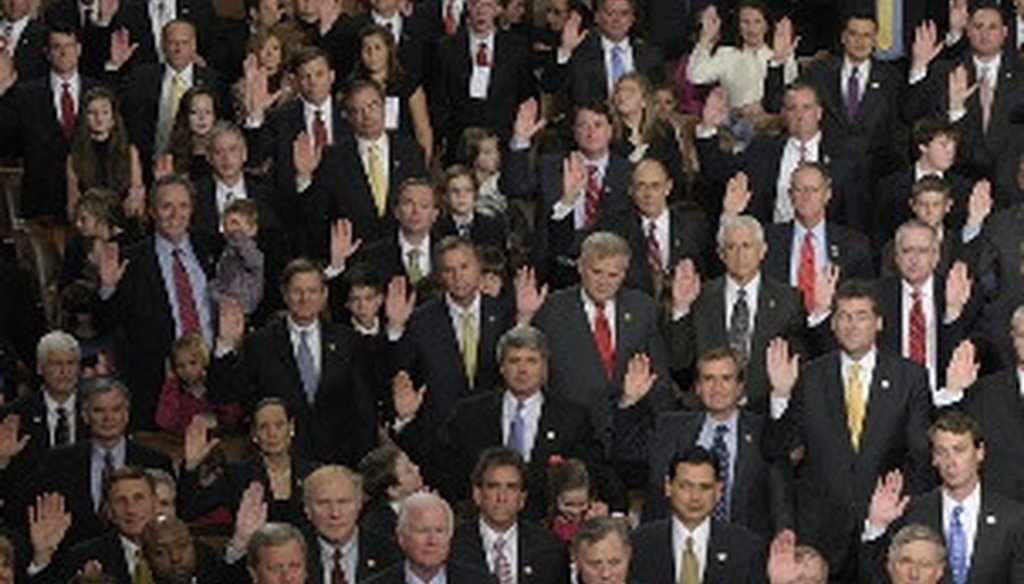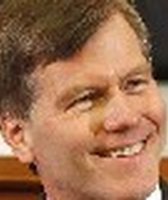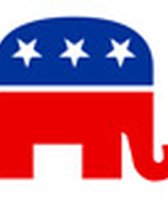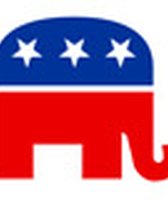Stand up for the facts!
Our only agenda is to publish the truth so you can be an informed participant in democracy.
We need your help.
I would like to contribute

Members of Congress share many things, including a fondness for using the same talking points.
Sometimes politics resembles a fifth grade sleepover.
And no, we’re not talking about the whispered gossip or noisy name-calling.
We’re talking about the way political claims get passed along in the manner of the "telephone" games once played at slumber parties. You know the game, where a claim gets whispered from one person to the next, usually emerging in a hopeless mangle.
In PolitiFact Virginia’s first eight months, we’ve seen plenty of recycled claims from both parties.
A juicy statement often starts with a campaign group, national committee or top-ranking politician. Then it percolates through senior members of the House and Senate, eventually reaching the freshmen and backbenchers.
And sometimes, truth gets lost along the way.
Consider a statement made in January by Rep. Paul Ryan, R-Wisc. and Chairman of the House Budget Committee. Ryan is the leading GOP voice on the need to reduce federal spending and slash the federal budget deficit.
Responding to President Barack Obama’s State of the Union address, Ryan said the president has pushed a massive increase in federal spending.
"Since taking office, President Obama has signed into law spending increases of nearly 25 percent for domestic government agencies, an 84 percent increase when you include the failed stimulus," Ryan said.
PolitiFact Wisconsin checked the claim and rated it Half True. The reporter found that
the spending figures for non-defense discretionary spending did show a 24 percent jump -- from $434 billion in 2008 to $537 billion in 2010. Discretionary spending goes for such things as education, health and housing -- in contrast to mandatory expenditures such as Social Security and Medicare "entitlements."
To get to 84 percent, Ryan -- and other GOP leaders who have repeated the claim -- put the one-time stimulus spending in 2010, not 2009 when the measure passed. The money is being spent over several years, though 2009 and 2010 saw the largest expenditures.
The claim was next made by House Majority Leader Eric Cantor, R-7th. This time PolitiFact Virginia looked into the story, finding the same problems as PolitiFact Wisconsin as well as some new concerns.
The Congressional Budget Office reported that about 34 percent of the discretionary stimulus money was spent in 2010. That would mean discretionary spending, if you include the stimulus, increased 44 percent during the first two years of the Obama administration -- far shy of the "over 80 percent" Cantor claimed.
Many economists also argue that the stimulus should not be counted
We took up the issue again earlier this month, when freshman Rep. Robert Hurt, R-5th, wrote that non-defense discretionary spending has increased "by over 80 percent in the last two years."
Hurt, unlike Cantor or Ryan, made no mention of the stimulus. He simply stated that this type of spending was up by more than 80 percent. Hurt’s press secretary attributed the figures to documents released by Ryan, documents that came out after PolitiFact poked holes in portions of the Wisconsin politician’s claim.
If you compare the 2010 total used by Ryan and Hurt -- $796 billion -- to the original $434 billion, you get an 83.4 percent increase. It creates a convenient Republican chart that shows non-defense discretionary spending soaring up like a rocket from 2008 through 2010. If Ryan and Hurt put the stimulus money in 2009, when it was approved, his chart would look like a roller coaster -- spending would have climbed steeply in 2009 and dropped in 2010.
To get another look at how much the government has spent in each of the past several years, we turned to budget tables from the Office of Management and Budget. The OMB is the White House’s budget office. It tracks exactly how much was spent by each agency during the past several years, regardless of the source of the funding. The CBO figures focus on when spending was approved, not when Uncle Sam actually writes the check.
According to OMB tables, non-defense discretionary spending was $522.4 billion in fiscal 2008 and climbed to $658.2 billion in fiscal 2010. That is a 26 percent increase, roughly in line with the increase cited by Ryan.
Between his reworking of CBO numbers and the new evidence from the White House budget figures, we concluded Hurt’s statement was completely wrong and rated it False.
Over a span of six months, the GOP claim on domestic spending evolved. Ryan and Cantor differentiated between stimulus and non-stimulus increases in discretionary spending. Hurt passed along a simpler version of the claim, failing to mention the stimulus and pointing towards a simple 80 percent change in discretionary spending.
We’ve seen a similar pattern with Democrats. When attacking Republican Gov. Bob McDonnell’s transportation plan, Democrats Terry McAuliffe and Brian Moran both said the governor didn’t have a plan for paying the money back. Both times we met the statement with a Pants on Fire rating.
PolitiFact Virginia is always looking for new facts to check. But we won’t lose track of the old, inaccurate claims that don’t fade away.
Our Sources
See individual Truth-o-Meter items.

















































